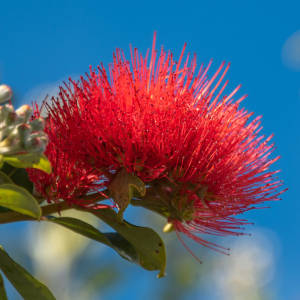Lemon Thrill
Another one of my fathers double daffodils. Slowly they are coming into flower and it is lovely taking a look each day to see what new one has emerged to show its face.
I have lost so many of my fathers favourite bulbs but pleased some are still coming up each year. With hybrid daffodils they don't seem to be so hardy as the more common kinds and subject to viruses and Narcissus bulb fly.
What is narcissus bulb fly?
Narcissus bulb fly larvae can spell bad news for daffodil bulbs and some other plants in the Amaryllidaceae. Heavy attacks kill bulbs and can lead to a severely reduced spring display.
Narcissus (daffodils) and some other bulbs in the Amaryllidaceae including Crinum, Eucharis, Galanthus (snowdrop), Haemanthus, Hippeastrum, Ismene, Leucojum, Nerine, Sprekelia and Vallota, are also host plants. It can also attack some underground storage organs of other families, such as Lachenalia, Iris and Scilla, can be attacked by the larvae of two different types of fly. The more serious pest is large narcissus bulb fly, as this has larvae that attack and destroy otherwise healthy bulbs. Maggots of small bulb flies are secondary pests that infest bulbs that have already been damaged by another pest or disease.
Signs of an infestation include;
Affected bulbs are often killed or produce a few grass-like leaves but no flowers. This is not to be confused with daffodil blindness.
The centre of the bulb is eaten out by a plump, creamy white maggot that is up to 18mm long. This is the large narcissus fly (Merodon equestris) which is a primary pest that attacks healthy bulbs.
The centre of the bulb is filled with the larva’s muddy excrement
If there are several creamy white maggots, up to 6 mm long, in a decaying bulb, these are likely to be larvae of small narcissus flies (Eumerus strigatus and E. funeralis). These are secondary pests that attack bulbs that have already been damaged by other pests, diseases or other injury.
Non-chemical control
Adult bulb flies like warm sheltered places, so the level of infestation can be reduced by growing daffodils in more shaded and exposed places.
After flowering, firm down the soil around the plants to make it more difficult for female flies to deposit their eggs.
Avoid introducing large narcissus bulb fly and other bulb problems into your garden by buying firm, good quality bulbs from reputable suppliers. Newly acquired high value bulbs can be protected by covering them with insect-proof nets such as Enviromesh, during mid-May to June when the female flies are laying eggs.
Any plants which show signs of bulb fly attack in the spring should be dug up and disposed of before the maggots leave the bulbs to pupate in the soil.
Chemical control
None of the pesticides available to amateur gardeners will control large bulb fly larvae.
I am feeling so much better today thank goodness.. my ears are still sore but no worse. John cold seem to be taking its course but otherwise he is Ok.

Comments
Sign in or get an account to comment.


